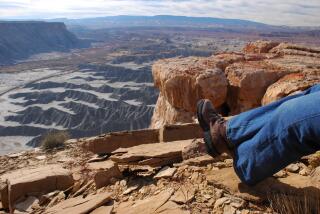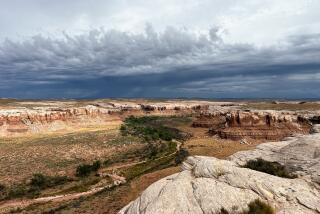Rebuild Land Management
When a ranch goes on sale in the West, chances are the advertisement will carry a notation something like this: “For sale: 10,000-acre ranch (1,500 acres deeded).” The 1,500 acres is the land actually owned by the rancher himself. The other 8,500 most likely is land leased from the federal government, primarily from the U.S. Bureau of Land Management, usually for grazing livestock and almost certainly at bargain-basement prices. The property belongs to all the people of the United States, but in Western culture and practice, much of this leased land has been used by the same ranch families for so long, it is assumed to be part of the ranch.
And therein lies just one of the many conflicts that makes life difficult these days for the bureau, the nation’s largest landowner, controller of an empire of 272 million acres that includes, for instance, 69% of all the land in Nevada and 41% of Utah. This once was land that no one wanted, what was left over after the great homesteading and mining rushes of the late 19th and early 20th centuries. Most of it was in a large blank area that maps had labeled as the Great American Desert.
The BLM empire was the object of the Sagebrush Rebellion of the middle 1970s, which largely was a revolt against efforts to modernize federal management of the public estate, to charge more realistic leasing prices, to prevent overgrazing and erosion of the lands and to recognize the new recreation demands on public lands. The Sagebrush rebels happily surrendered when the Reagan Administration came to power and reverted to the old, comfortable way of doing things, which meant that generally the BLM was a bureaucracy that too often acted as advocate and partner of the rancher, miner and logger rather than a tough-minded landlord. Why should the users buy the federal land and pay taxes on it, when they could get everything they wanted more cheaply from the federal government?
The abuses of the federal estate were outlined in detail in a series of articles on the Bureau of Land Management this past week by Times writers Mark A. Stein and Louis Sahagun. The series makes clear that there are many reasons the BLM acts the way it does and not all is the fault of insensitivity by BLM managers to the public interest. Granting deeds to mining claims for as little as $2.50 an acre, for instance, is dictated by the archaic federal mining act of 1872. Congress should change the law so that mining is conducted under leases, allowing the land to remain in federal ownership.
The law provides that users should pay their way. But even with recent increases, ranchers still pay only $1.86 per month to graze each cow on BLM land even though grazing costs on nearby private property may run $10 or more.
Stein and Sahagun noted that past Administrations and Congresses have put the BLM on a starvation budget so that it is impossible for the bureau to protect sensitive lands that are subject to increasing demands for both development and recreation use. The bureau should be commended and encouraged when it does act to protect threatened natural areas against misuse, such as its clampdown on indiscriminate driving by motorcycles and all-terrain vehicles in Afton Canyon between Barstow and Baker.
But the bureau seems to be less than eager to implement even the more recent laws such as the 1976 Federal Land Policy and Management Act that was supposed to provide the bureau with a modern charter. Among other things, it directed the bureau to study and set aside BLM lands to be considered for protection as wilderness. But only a fraction of BLM property has been proposed for such designation.
BLM lands no longer can be considered just another part of the ranch. Congress and the Administration need to sort out the all the conflicting demands on public lands and provide the bureau with the funds needed to manage and protect them with an eye toward the future.
More to Read
Sign up for The Wild
We’ll help you find the best places to hike, bike and run, as well as the perfect silent spots for meditation and yoga.
You may occasionally receive promotional content from the Los Angeles Times.






